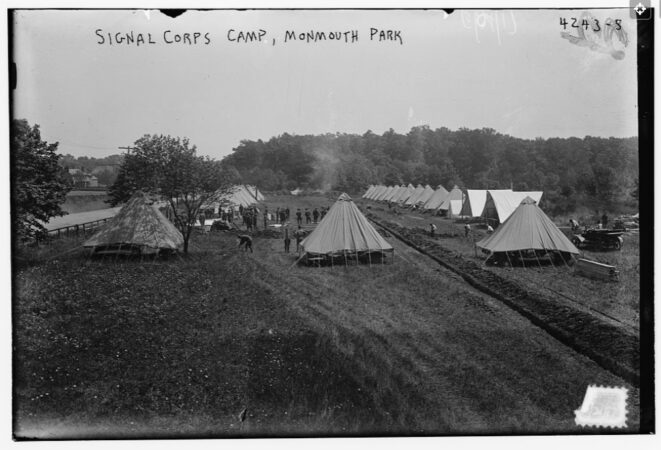On June 3, 1917, 32 soldiers of the U.S. Army Signal Corps first arrived at the site of what would become Fort Monmouth in two Model T Ford trucks. Originally named Camp Little Silver due to its location, they built a cantonment, quartermaster facilities, and a camp hospital, all under canvas. The installation was originally responsible for training the 1st and 2nd Reserve Signal Battalions. It was renamed Camp Alfred Vail shortly after its establishment in 1917. The Chief Signal Officer authorized the purchase of Camp Vail in 1919. The Signal Corps School relocated to Camp Alfred Vail from Fort Leavenworth that year.








It gained permanent status in 1925, and was named Fort Monmouth in honor of the patriots who died in the Battle of Monmouth. In 2005, the Base Realignment and Closure (BRAC) Commission mandated the closing of Fort Monmouth, and its flag was lowered on September 10, 2010.
Sources:
A Concise History of Fort Monmouth, NJ and the U.S. Army CECOM Life Cycle Management Command. (2009). Prepared by the Staff of the CECOM LCMC Historical Office, U.S. Army CECOM Life Cycle Management Command, Fort Monmouth, N.J., Fall 2009. Available: http://www.fortmonmouthnj.com/wp-content/uploads/2014/12/Concise-History-of-Fort-Monmouth.pdf
CECOM History. (2024). U.S. Army Communications-Electronics Command. Aberdeen Proving Ground, Aberdeen, Md. Available: https://www.cecom.army.mil/Historian/History.
Fort Monmouth History. Available: https://www.fortmonmouthnj.com/about-us/history/
Image: Signal Corps camp, Monmouth Park. Bain News Service, publisher, created/published between ca. 1915 and ca. 1920. George Grantham Bain Collection, Library of Congress, public domain. Available: https://www.loc.gov/item/2014704859/


Leave a Reply